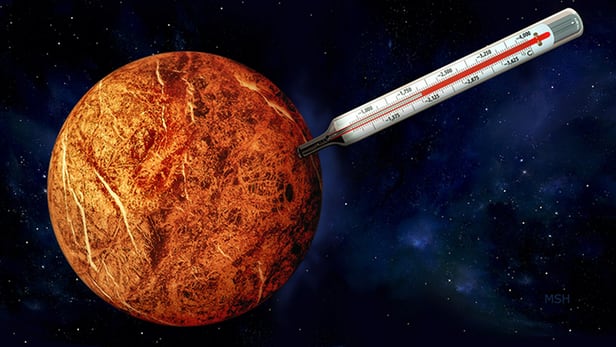Plate tectonics complicates the Goldilocks equation

Whether a planet is habitable may depend on geology as well as distance (Credit: Michael S. Helfenbein / Yale University)
If Yale researcher Jun Korenaga is correct, then habitable planets may be rarer than previously thought. According to a recently published paper, the ability of Earthlike planets to self-regulate their temperatures may not be as simple as once believed and that a new "Goldilocks zone" may need to be considered when looking for worlds beyond the Solar System where life could exist.
Of all the factors that go into determining if an exoplanet might habitable, the Goldilocks or habitable zone ranks at the top of the list. Like the little girl who preferred her porridge temperature to be "just right," the Goldilocks zone is a band around a star where a planet will receive the right amount of solar energy for liquid water to exist. Since water is absolutely necessary for life as we know it to exist, whether a planet sits in the zone where it is neither too hot or too cold is paramount in determining if it is a candidate for habitability.
However, there's more to determining the temperature of a planet than just its distance from its sun. Venus and Mars both sit in the Solar System's Goldilocks zone, yet both are dead worlds. For over sixty years, geologists and planetary scientists one key factor has been plate tectonics – specifically, plate convection.
The idea is that as the plates of the Earth's crust float about on the hot, plastic magma of the mantle, they act as a kind of thermostat that automatically adjusts the planet's temperature. This is important because between the initial heat of the Earth radiating constantly into space and the reheating or the Earth's core by decaying radioactive isotopes, the interior temperature of the Earth changes over the eons.
The self regulation works because the rate of convection of the magma under the Earth's tectonic plates is determined by temperature. If the Earth radiates too much heat, this cools the magma under the plates, which slows down the convection, and the surface warms. If Earth radiates too little heat, the convection speeds up, and the surface cools.
In this way, the Earth can keep itself roughly in the temperature range of liquid water. In addition, scientists believe that the same would hold true for most tectonically active Earthlike planets and those that were at first too hot or too cold would eventually regulate themselves into habitability if they were in their system's Goldilocks zone.
But Korenaga has other ideas. According to his research, viscosity and the early history of a planet are major factors that make the regulating mechanism much less certain.
"If you assemble all kinds of scientific data on how Earth has evolved in the past few billion years and try to make sense out of them, you eventually realize that mantle convection is rather indifferent to the internal temperature," says Korenaga.
According to his research, self-regulating planets are much rarer than thought because the interior structure and temperature of the mantle must also be "just right" or the viscosity of the magma would be too much or too little, so the convection would be too slow or too fast for effective regulation. The result would be a planet too hot or too cold for life to exist. Given the way planets form by a series of catastrophic collisions, this is highly unlikely.
"The lack of the self-regulating mechanism has enormous implications for planetary habitability," says Korenaga. "Studies on planetary formation suggest that planets like Earth form by multiple giant impacts, and the outcome of this highly random process is known to be very diverse."
The results were published in Science Advances.
Source: Yale University
